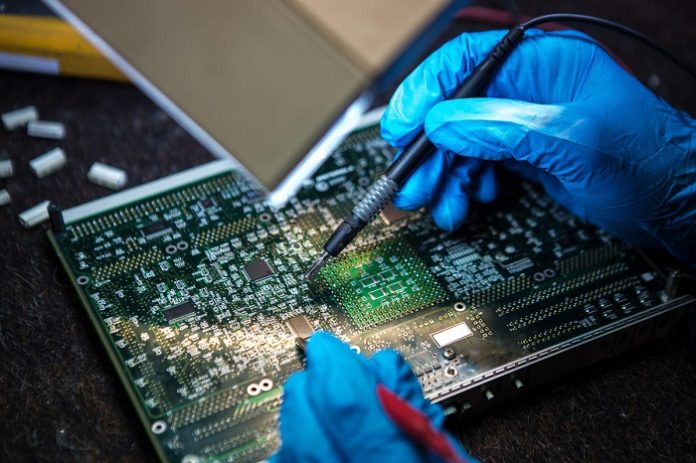The government is likely to review the production linked incentive (PLI) scheme for electronic components and IT hardware to make it more attractive, Minister of State for Electronics and IT Rajeev Chandrasekhar said Friday. He also said there is a tremendous window of opportunity for India in the semiconductor ecosystem and the government is strategically working on it.
“We are proactively reviewing PLIs every quarter, not with intention of only improving but to measure the efficacy, how can we grow it more. For example, PLI for components and IT hardware, I completely agree that we need to re-examine it in detail and see what will get it going,” Chandrasekhar said at the Electronics Summit organised by CII.
He was responding to electronics manufacturing firm Dixon Technologies Chairman Sunil Vachani’s suggestion that small and medium electronic component makers need to be encouraged under the PLI scheme.
The Manufacturers’ Association of Information Technology (MAIT) had said the government should allocate Rs 20,000 crore under the PLI scheme for IT hardware, to boost manufacturing of personal computers, tablets and servers in the country.
The government has earmarked Rs 7,325 crore as an incentive under the scheme for IT hardware.
The minister also said there will be a series of meetings between the Ministry of Electronics and Information Technology (MeitY) and the industry by early December to discuss the issues faced by the electronics sector.
Chandrasekhar said there is a tremendous window of opportunity for India in the field of semiconductors.
“We have tried this many times in the past. There is a Prime Minister who has got tremendous clarity and understanding about the sector, understands the centrality and criticality of the semiconductor ecosystem.
“I have no doubt we are on the right path. We have a right strategy and very shortly you would hear that the country is going down that path with absolute strategic clarity and strategy,” the minister said.
Electronic chip company Infineon Technologies’ Managing Director Vinay Shenoy said there is a huge demand for electronics, and countries and companies around the globe are looking for alternative destinations for investments.
“Various semiconductor companies have committed over USD 100 billion capex over the next 5 years. This, combined with geopolitical uncertainties and supply chain disruption that are causing rethink amongst companies and countries, we have an excellent role to play there because of the variety of strength that we bring in,” Shenoy said.
He noted that India brings in high-tech semiconductor design capabilities which constitute 40 per cent of the total value added in a semiconductor or electronic chip.
“If you push for fabrication, which is the next 30 per cent, we can hold 70 per cent of the total value added in a typical semiconductor.
“We should strike when the iron is hot and I don’t think iron cannot get hotter than this. We have a window of 2-3 years to conclude this decision. Whether it is large captive manufacturing companies or even foundries, establishing semiconductor manufacturing in India is very critical,” Shenoy said.








